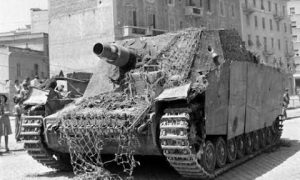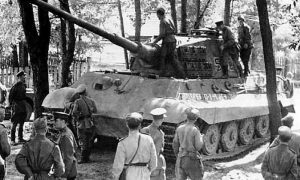Evacuation to the USSR during the Great Patriotic War (1941-1945)
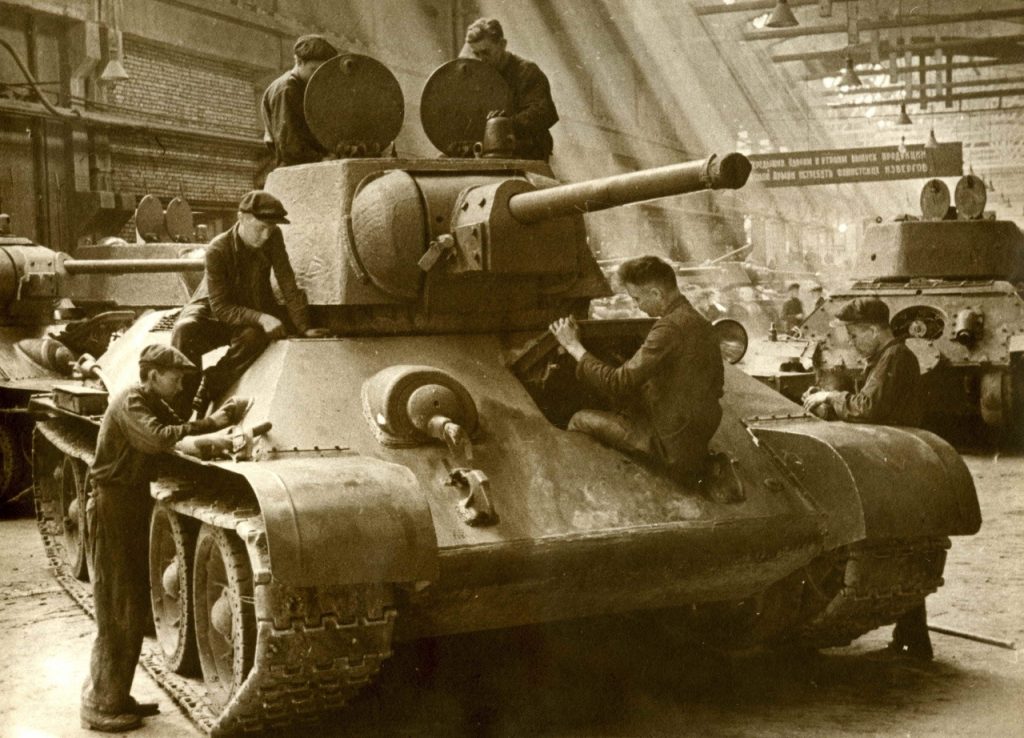

The great Soviet industrial evacuation- a large-scale movement in the initial period of the war with Nazi Germany from the occupation zone to the eastern regions of industrial enterprises, cultural and scientific institutions, food supplies, raw materials and other material resources. The evacuation made it possible to preserve the main economic base and industrial potential of the country and became one of the factors that ensured victory in the war.
About 0.5 million people were evacuated from besieged Leningrad in the spring of 1942 to Kazakhstan – Alma-Ata and to Uzbekistan – to Tashkent and Samarkand; from besieged Moscow in the winter of 1941-1942. – about 2.5 thousand industrial enterprises, ministries and departments, cultural institutions were evacuated to Kuibyshev, as well as to Siberia and the South Urals. In the first months of the war, about 30 – 35% of the territory of the USSR was under the occupation of the enemy.
The second half of 1941 was the most difficult for the country’s economy. The industrially developed part of the country was also lost. Raw materials and cattle were transported to the east. By the end of the year, about 15 million people were evacuated. Since the beginning of the war, a rationing system has been introduced. In the deep rear, educational institutions and hospitals were created. The enterprises evacuated in 1942 were operating at full capacity. The defense complex in the first year of the war grew 2.5 – 3 times. The fuel and energy complex also did not lag behind. Before the war, 45% of oil was extracted in Grozny (Chechnya) and Maikop(Adygea). It was oil that was Hitler’s main influence. In June 1942, Blau’s plan was approved. – breaking the left wing of the Soviet-German front in the south made it possible to strengthen the front line before the upcoming Battle of Stalingrad.
1941 and 1942 became a serious test for the male population of the country. Women replaced men in factories. Labor discipline was tightly controlled. In terms of its scale and effectiveness, this work has no analogues in world history: in the first 4 months of the war(June 22 – October 15, 1941), 8 million people, 2.5 thousand industrial enterprises, 1.5 thousands of collective and state farms.
The famous English writer Alexander Werth, correspondent of “BBC” and the newspaper “The the Sunday Times”, lived in the Soviet Union, wrote: “The story of how the whole enterprise, and millions of people were taken to the East, these companies were restored in the shortest possible time and in unheard-of difficult conditions, and how they managed to enormously increase production during 1942 is, above all, a tale of incredible human resilience. “He especially emphasized that “the most magnificent organizational feat” was accomplished in the Soviet state at the very height of the German invasion, when the “industrial regions of the European part of enormous importance” of the country were captured by the enemy…
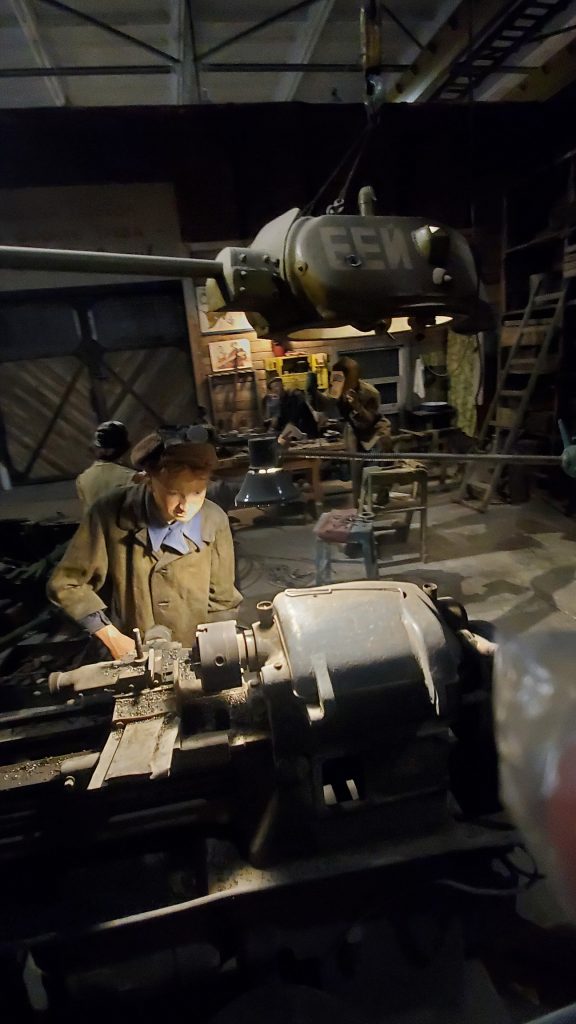
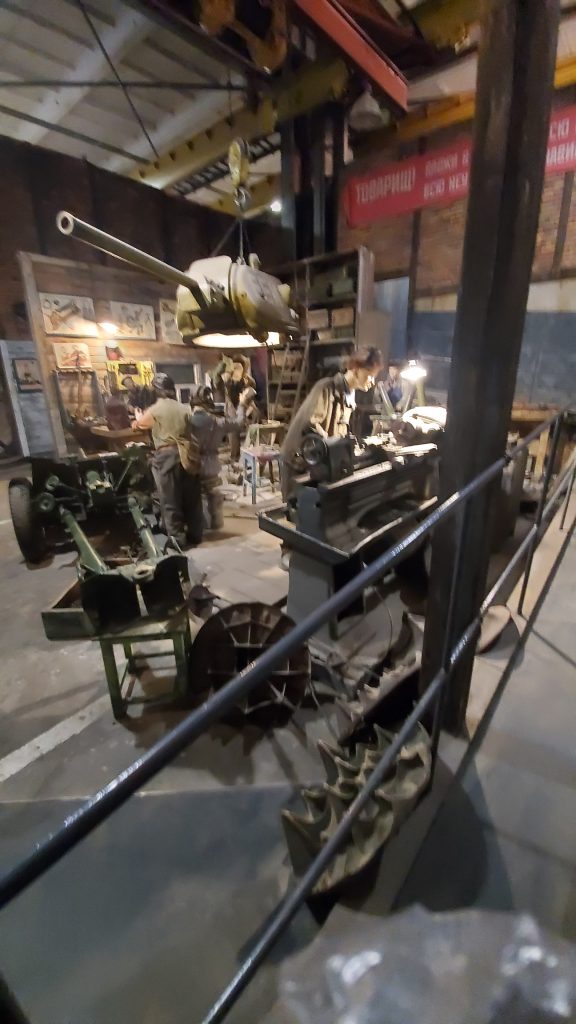
Soviet Objectives and Scope
Before the war, 40% of the population lived on the territory that came under the blow of the German offensive, and 33% of the country’s industrial potential, including defense enterprises, was concentrated. The total number of industrial enterprises was 31,850, including 37 ferrous metallurgy plants, 749 heavy and medium-sized mechanical engineering plants, 169 agricultural, chemical, woodworking and paper-making machinery plants, 1135 mines, over 3 thousand oil wells, 61 large power plants, hundreds of textile, food and other enterprises.
In preparing the evacuation plan, the experience of the First World War was taken into account, when Russia in 1915. took the factories of the Warsaw and the Baltic industrial hubs to the rear, but never launched them at full capacity in new places. The Soviet leadership realized that the evacuation of enterprises was a complex task: to solve it, it was necessary not only to create ready-made sites for enterprises deployed in the Urals and Siberia, to provide for reserves of electrical power, to build factory and household premises, but also to provide for household supplies, food for the arriving new jobs for the personnel of enterprises, teaching children in schools.
In addition to industry, the evacuation plan provided for the export of cultural property. Thus, the collection of the State Hermitage had to leave for Molotov and Sverdlovsk, where before the war the museum staff visited to inspect the buildings intended for storage. In 1939, a separate building was assigned to the Hermitage in Leningrad, where they began to prepare boxes and packing material, which were ready by the beginning of the Great Patriotic War.
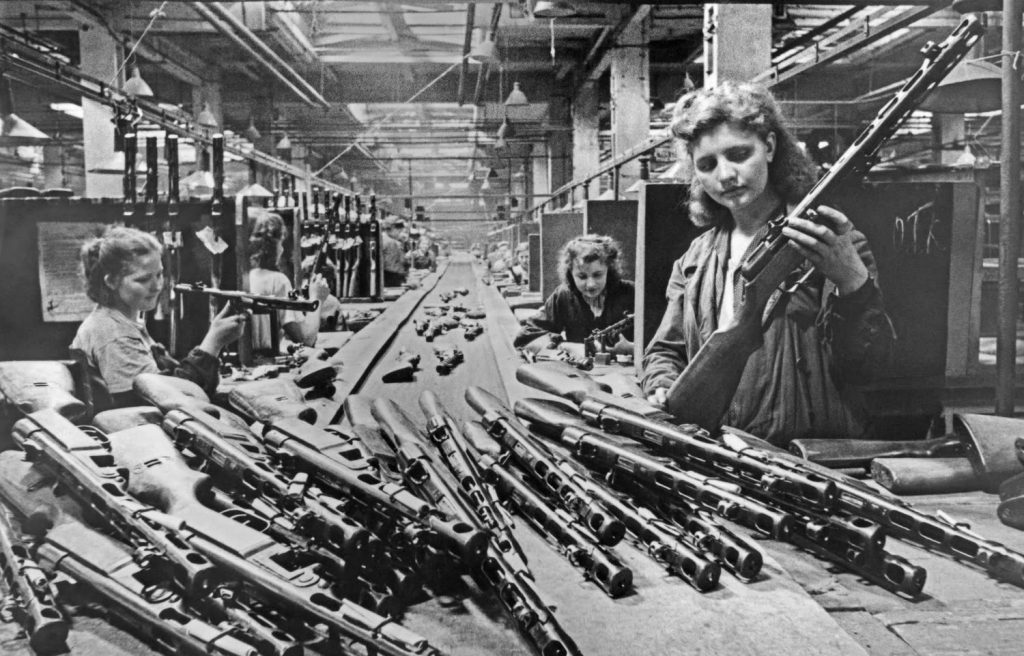
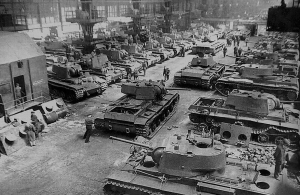
Organization of evacuation
In the USSR, there was no official plan for the evacuation of productive forces in case of war. However, according to some sources, starting in 1927 – after the severance of diplomatic relations with Great Britain – in the USSR, the Labor and Defense Council(STO) developed defensive plans, which included evacuation measures designed to prevent a repetition of the events of the Civil War, when the presence of the population in the combat zone impeded the movement of troops, contributed to the spread of epidemics and demoralization of the military. Thus, these plans were based on the experience gained during recent events.
There is information that the export of a certain amount of industrial equipment and skilled workers to the eastern regions of the USSR took place even before the start of the war. In particular, the military attaché of the American embassy reported on the dispatch from Moscow to the east of a significant number of machine tools and personnel in late 1940 and early 1941. According to some researchers, the rapid growth of industrial production at the beginning of 1942 can be explained precisely by the fact that the evacuation of industry began in 1941.
Shortly before the German attack on the USSR in 1941, some high-ranking Soviet officials raised the issue of preparing for the evacuation, which did not find the approval of the country’s top leadership. There is a known case when, on a report on the evacuation from Moscow in the event of the outbreak of war, 1.4 million people, filed in April 1941, JV Stalin wrote: “Pronin. I consider your proposal for a “partial” evacuation of the population of Moscow in “wartime” untimely. I ask you to liquidate the evacuation commission and stop talking about evacuation. Who will need and if it will be necessary to prepare the evacuation – the Central Committee and the Council of People’s Commissars will notify you”. Military historian A. Martirosyan, however, explained the background of this resolution: since any mobilization measures under international law were regarded as the beginning of the war, it was critically important for the Soviet Union to keep this work secret, and the German embassy reported Pronin’s report to Berlin literally the next day, it became known to the Soviet military counterintelligence. Therefore, Stalin’s resolution followed in Pronin’s letter.
The evacuation work was supervised by the Council for Evacuation under the Council of People’s Commissars of the USSR, created by order of IV Stalin on the third day of the war(in fact – Alexei Kosygin).
The evacuation was carried out in two stages: in 1941 – from Belarus, Ukraine, the Baltic states, Moscow and Leningrad ; in 1942 – from the southern regions of the European part of the USSR. The volume of the evacuation was so great that in July 1941, almost half of the entire wagon fleet of the USSR was used for its implementation.
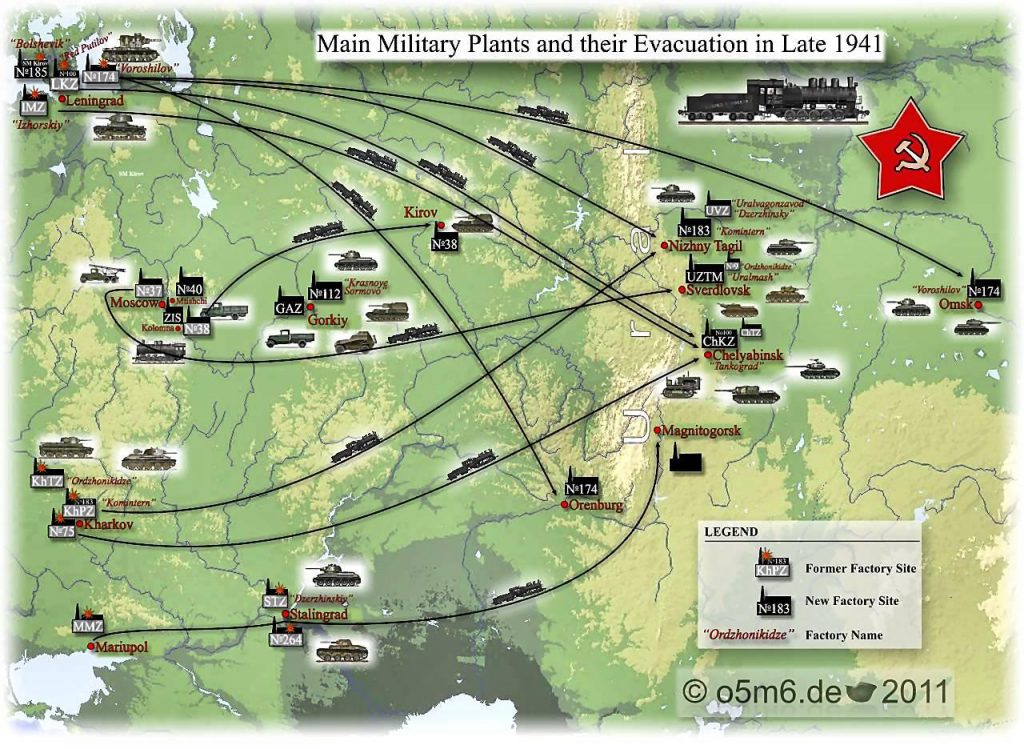
The first stage of the evacuation
Since any war is a struggle for economic resources, and Germany by the time of the attack on the USSR had accumulated a lot of experience in using these resources for its own good, on June 29, 1941, the Council of People’s Commissars of the USSR and the Central Committee of the All-Union Communist Party of Bolsheviks issued a Directive calling on the population in case of a forced retreat of the Red Army “to steal a rolling stock, not to leave the enemy a single steam locomotive, not a single carriage, not to leave the enemy a kilogram of bread or a liter of fuel”. Thus, it was proposed to save everything that could be evacuated from the enemy as much as possible, and to destroy and destroy valuable property and food supplies that could not be sent to the rear.
Factories
Already on June 23, on the railways of the USSR, for the speedy advancement of military echelons and cargoes, a special military schedule was introduced – letter A, with the maximum use of the capacity of the lines. However, in reality, in order to allow more trains, traffic operated manually signalers along the railway( “livesock), and the trains were literally with a distance of 700-800 meters from each other] to change the schedule of work of locomotive crews:. If in peacetime they worked on a certain shoulder, then in wartime a tour car for the locomotive brigade was attached to the train, and she led the train to its destination, leaving thousands of kilometers from its depot and without returning home for months… This made it possible to carry out a gigantic work unprecedented in history: to send 30 thousand trains and 1.5 million cars.
According to the reports of the People’s Commissariat of Railways, in July-November 1941 alone, 2,593 enterprises were evacuated to the east, of which 1,350 were evacuated in the first three months. Among them there were 1523 large factories.
The largest number of enterprises were evacuated from the Ukrainian SSR(550 enterprises), from Moscow and the Moscow region(498 enterprises), from the Byelorussian SSR(109 enterprises), Leningrad (92 enterprises).
People
The enterprises transported 18 million workers, employees and their families. In total, during the war, the number of evacuees amounted to about 25 million people.
According to the Central Statistical Office of the USSR, of the population recorded on the lists on September 15, 1941, subject to evacuation(except for children from evacuated child care institutions), the share of Russians was 52.9%, Jews – 24.8%.
For the most part, local residents treated the arrived refugees well. In particular, in the Uzbek SSR, where there was a movement for the adoption of evacuated orphans, 200 thousand children and adolescents left without parents were placed. Shaakhmed Shamakhmudov, a blacksmith from Tashkent, and his wife Bahri, who adopted and raised 15 orphans, were widely known.
According to some Western historians, the concept of evacuation also includes the deportation of some peoples of the USSR during the Great Patriotic War, which were perceived by the Soviet government as a potential human resource for replenishing the enemy’s army.
Resources
In the second half of 1941, 2,393.3 thousand head of livestock were moved to the eastern part of the country.
Evacuation directions
Of the 1,523 large enterprises moved to the deep rear, they were relocated: to the Urals – 667, to Western Siberia – 244, to Eastern Siberia – 78, to Central Asia and Kazakhstan – 308, to the Volga region – 226. All tank and aviation factories, factories of ammunition and weapons, 150 machine-building plants, 94 – metallurgical, 40 plants of the electrical industry.
Second stage of evacuation
During the second period of evacuation, 150 large enterprises were removed to the east, including equipment from the Maikop and Grozny oil fields and oil reserves. Together with industrial facilities, up to 30-40% of workers, engineers and technicians were evacuated.
Export of cultural property
The evacuation of museums from the western territories of the USSR began on the very first day of the war, and often museum workers acted on their own initiative, identifying the most valuable collection items for evacuation, looking for transport and obtaining evacuation permits. This became a personal feat for many cultural workers.
So, thanks to the director of the Sevastopol Picture Gallery, Mikhail Kroshitsky, without an order for evacuation, the selection and packaging of the most valuable specimens of the collection was organized. Boxes with paintings and graphics, sculptures and works of decorative and applied art, old books and magazines from the museum library were transported to the Grafskaya pier, where they were loaded onto a ship and a few days later taken to Batumi. For 13 months, the cargo taken out of Sevastopol was on the way, under the supervision of a single person – the director of the gallery, until it finally arrived in Tomsk. There was found a place to store the exhibits in the building of the regional museum of local lore, where they were kept until they returned to Crimea.










